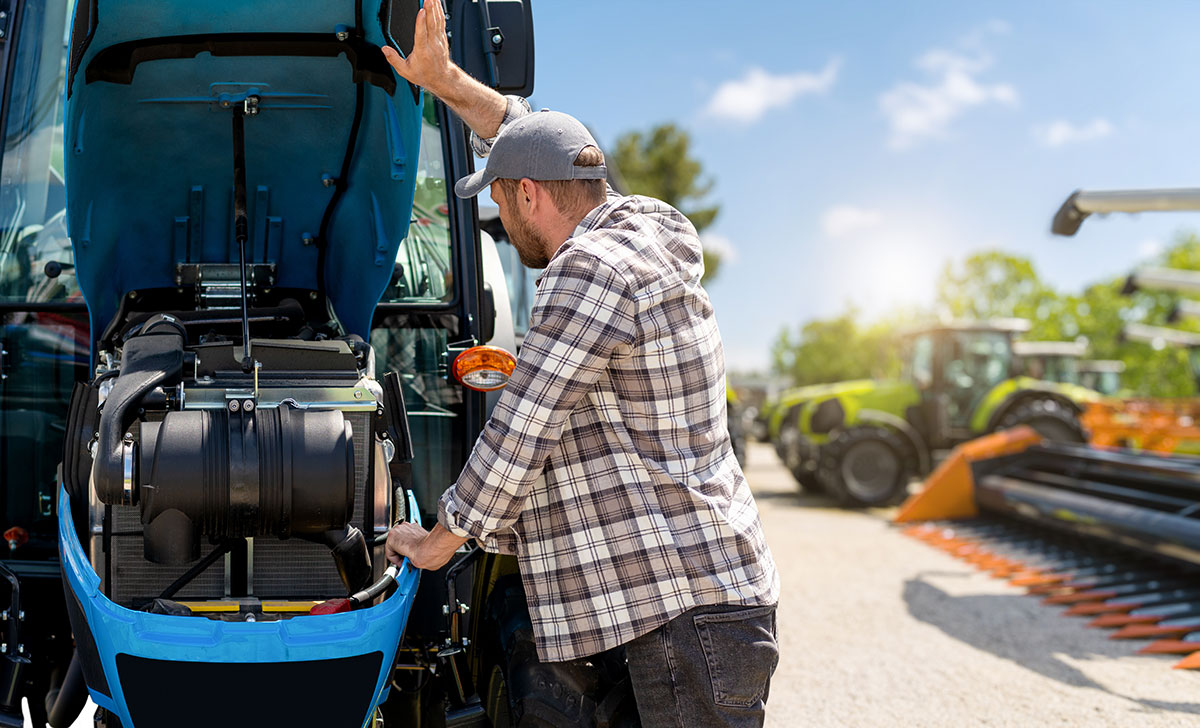One of the questions I hear most often in my line of work is: “What’s the right machine for my operation?” It sounds like a simple question—but the truth is, the answer can be pretty different depending on your acreage, your crops, and how you work your land.
Whether you’re a seasoned farmer upgrading old machinery or someone just getting started, picking the right equipment is a big decision. You’re not just buying a tractor or a planter—you’re investing in something that needs to work for you season after season. In my experience, there are a few key things to think about before signing on the dotted line.
Let’s walk through them.
Start With Your Acreage
The first thing I always ask someone is: “How many acres are you working?” The size of your operation sets the tone for everything else. If you’ve got a smaller acreage—let’s say under 200 acres—you don’t need to overspend on a high-horsepower machine meant for commercial-scale operations. That kind of overkill just adds cost and complexity.
On the flip side, if you’re managing thousands of acres, you need equipment that can cover a lot of ground quickly and efficiently. Bigger fields often mean bigger tools—wider implements, more horsepower, and better fuel capacity. Time is money, and efficiency becomes everything.
Tip: Don’t be tempted by the biggest machine on the lot. Think about how much time you have during your window to plant or harvest and choose accordingly.
Know Your Crop Types
Different crops require different tools. Corn and soybeans, which are common around here, have different planting and harvesting needs than something like wheat or specialty vegetables. For example, row spacing, seeding depth, and residue management all play a role in equipment selection.
A mistake I see too often is someone buying a general-purpose planter or combine, only to realize later it’s not a great fit for the crops they’re focused on. That leads to frustration, lost yields, or costly retrofits.
If you rotate crops, think ahead. Some equipment offers better versatility across multiple crop types, while other setups are more specialized.
Tip: Talk to your dealer about your crop plans not just for this season, but for the next few years. A little planning can save you thousands.
Consider Your Soil and Terrain
Not all ground is created equal. Some farmers are working rich, flat loam; others deal with hills, clay, or sandy soil. Your local terrain should influence the kind of equipment you choose.
In areas with a lot of rolling land or tight field entrances, you may need more maneuverable or compact machines. In wet ground or heavy clay, you might prioritize weight distribution or flotation tires to avoid getting stuck.
I once had a customer who bought a great machine—on paper. But once it hit their soggy lowlands, it was a nightmare. Had we talked through their field conditions in more detail, we could’ve saved them that headache.
Tip: Walk your fields and take note of trouble spots. Bring those up when shopping around. Your dealer should be able to help you match machines to those challenges.
Think About Your Team
Who’s going to be running the equipment? If it’s just you and a helper, that’s a different story than if you’ve got a full crew. More advanced machines with touchscreen controls and GPS steering might be a dream for some and overwhelming for others.
You don’t want your team losing time because they’re stuck trying to figure out a complicated interface. Reliability and ease of use matter just as much as performance.
Tip: Look for equipment that matches the skill level and confidence of your team. And don’t skip the training—most dealerships (mine included) offer setup help and basic how-to walkthroughs.
Balance Budget and Longevity
No one likes to talk about price, but let’s be honest—it matters. Your budget sets the boundary for what’s possible. But here’s what I tell every customer: don’t just look at the sticker. Think about the long-term.
A cheaper machine might get you through the first year, but if it breaks down regularly or doesn’t scale with your farm, it could end up costing more in the long run. I’ve seen a lot of buyers wish they’d stretched a little further for quality or a feature they thought they wouldn’t need.
Tip: Focus on total cost of ownership—not just the purchase price. That includes maintenance, fuel efficiency, parts availability, and resale value.
Ask Questions and Compare Options
Lastly, don’t be afraid to shop around and ask questions. A good salesperson won’t pressure you—they’ll walk you through pros and cons. I always encourage customers to look at a couple of models, ask about service records, and even try out demo units when possible.
This is a working relationship, not just a transaction. The better we understand your operation, the better advice we can offer.
Tip: Bring a list of your must-haves and nice-to-haves. That helps narrow down choices and keeps you focused.
The right equipment isn’t always the newest or most expensive. It’s the one that fits your land, your crops, your team, and your goals. If you can match those up, you’ll get more done with less stress—and that’s what success looks like in this business.
If you’re ever unsure, ask. That’s what people like me are here for. I’d rather spend an hour helping you choose the right machine than see you stuck with the wrong one.
Until next time—work smart, plan ahead, and take care of your equipment. It’ll take care of you right back.––
Need help figuring out what’s right for your farm? Reach out anytime. I’m happy to walk through options or point you in the right direction.
